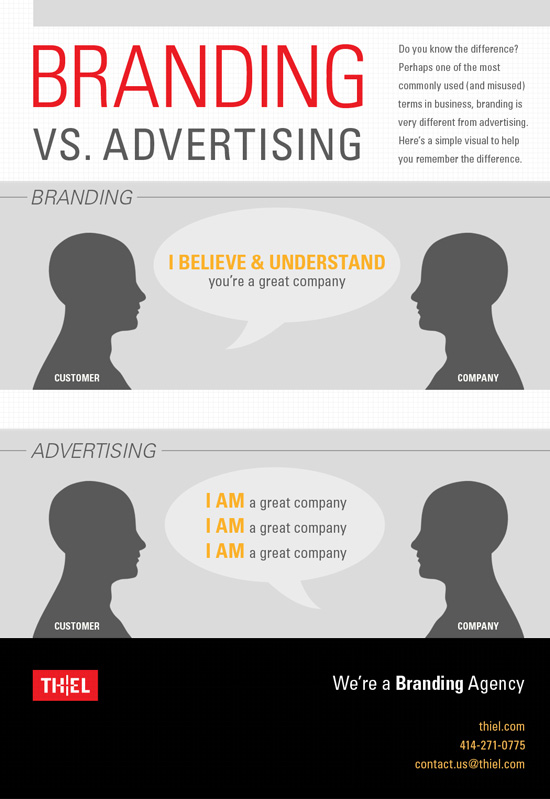Perhaps the most common and serious offender of branding myths is this one. For some reason, business professionals, both in and out of the industry, like to use branding interchangeably with advertising and marketing. While related, these terms have very different meanings and applications, and it’s critical for clients and industry professionals alike to understand their key differences.
We’ve previously discussed the differences of branding and marketing in-depth here, but advertising is yet another word that is frequently added into the mix when discussing branding or advertising needs and objectives, so we feel it’s important to provide some clarification.
As defined in our earlier post, “branding establishes, reinforces and enhances experiences with an organization or product. It communicates a promise to your intended audience, and creates a distinct and memorable image in the mind of your customers.”
Whereas marketing, “actively promotes a brand’s product or service. It’s a way of reaching and engaging people. Marketing keeps your company top-of-mind among the decision-makers you are trying to do business with.”
Advertising, on the other hand, is an activity of marketing that specifically promotes a brand’s product or service to reach customers through paid media — traditional or digital.
To say branding is advertising greatly diminishes its true meaning and power. Branding is much more than a single marketing activity; it includes every touch point and is the consummation of the words, images, experiences and emotions associated with the brand. While advertising is a “what you do,” branding is a “who you are.”
Perhaps the best way to explain the difference is the double entendre — and some of the words we live by — branding is every • thing. Branding can be thought of as every “thing” that helps shape a brand from its logo to key messaging, corporate culture, advertising, public relations, customer service and more, but it’s also “everything,” meaning it is one of the most important aspects of a given business that directly influences its success or failure.
Branding is not advertising alone; it’s the sum of every experience, every communication and every “thing” an individual experiences with a company to reinforce and shape how the business is perceived through their eyes and in their mind.

